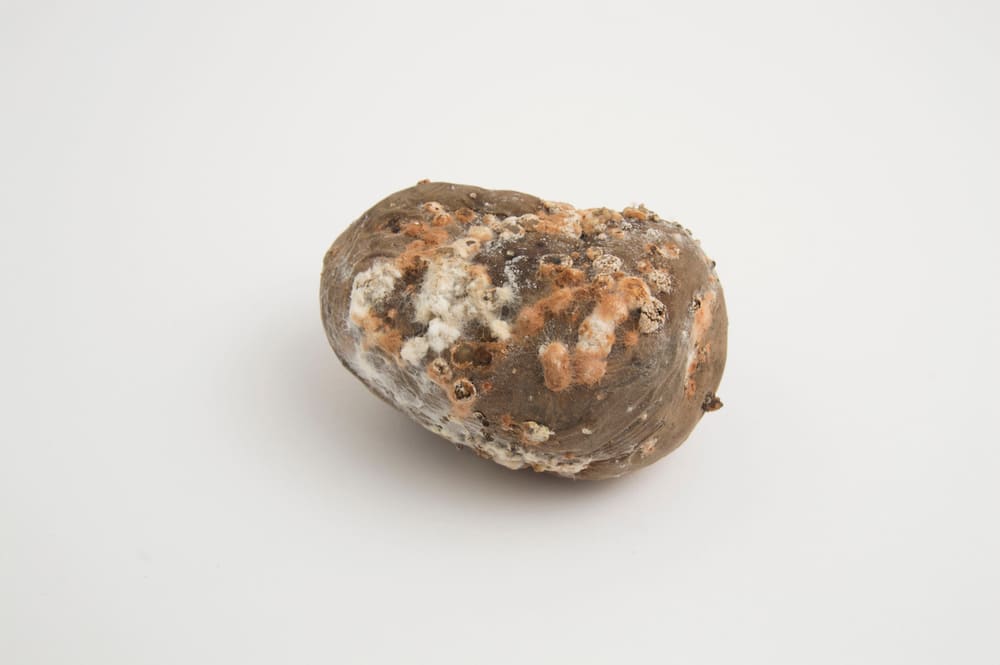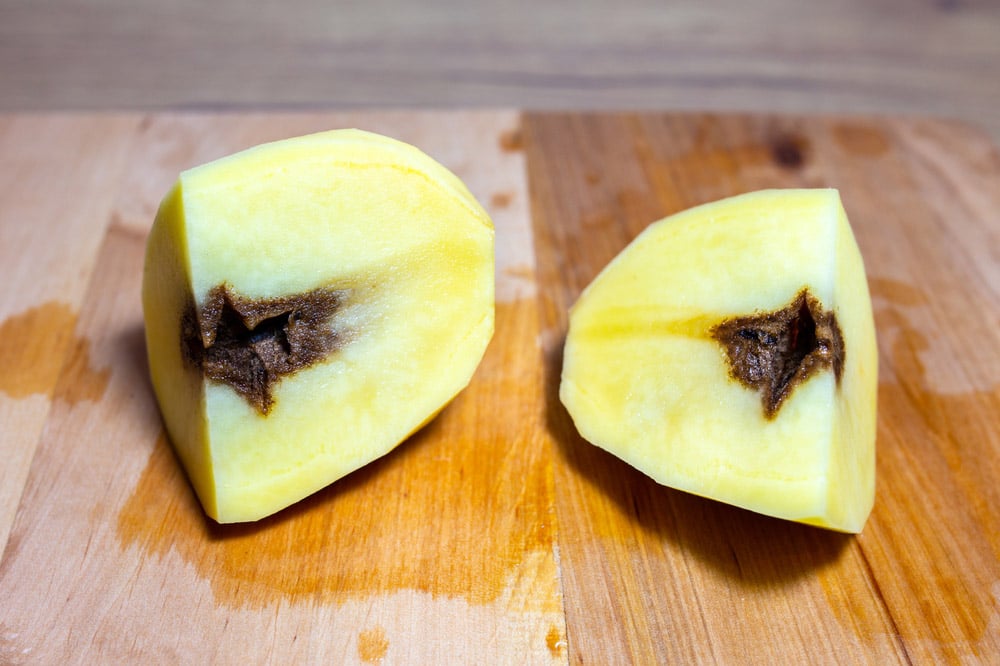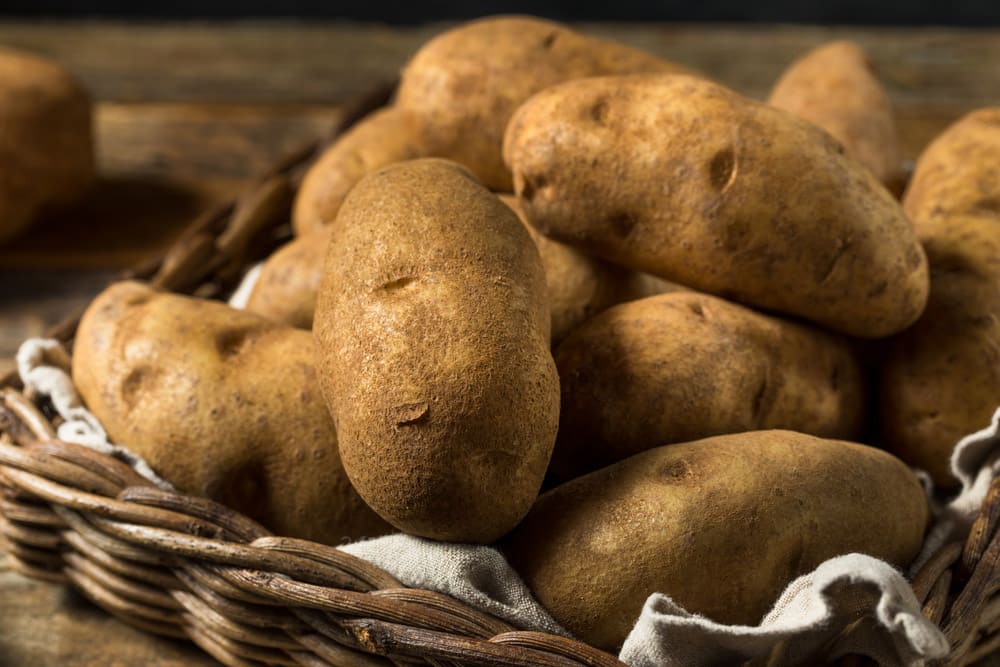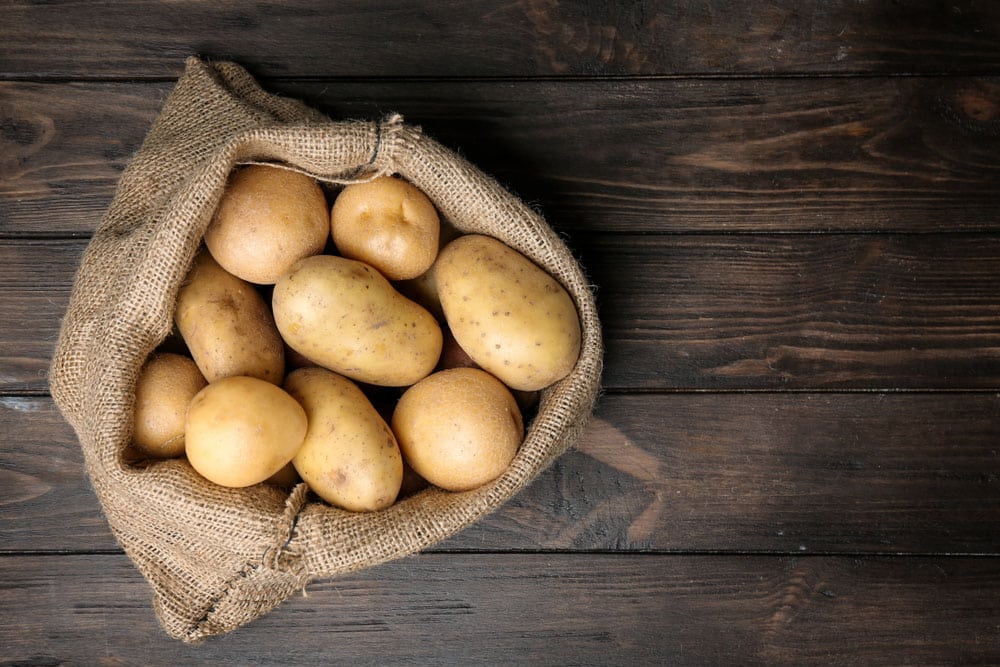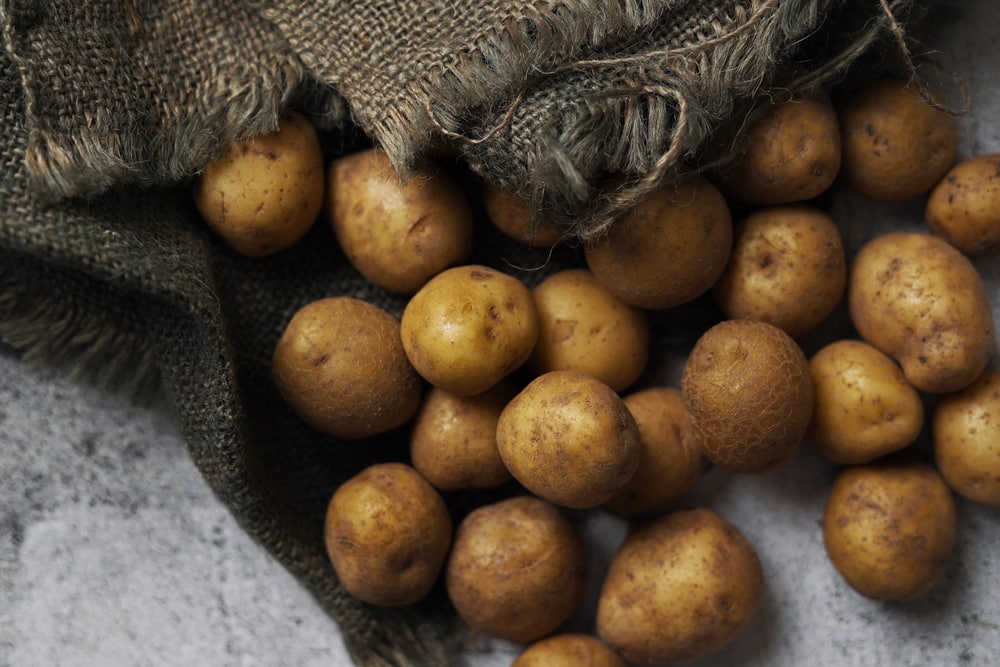
Potatoes are one of the most consumed roots and are added to an array of culinary delights. It’s an extremely useful veggie that’s become essential in various dishes and baked items. It wouldn’t be wrong to say that it’s enjoyed by kids and adults alike.
All in all, it’s a delicious and nutritious vegetable, but there are times when white stuff grows on potatoes. It can look unappetizing, but should you worry in terms of health and taste issues? Let’s see what the white stuff on potatoes is and whether it spoils them or not.
White Stuff on Potatoes
The white and raised stuff on the potatoes is basically swollen lenticels which develop when the potatoes are grown in wet soil conditions. Simply put, it is caused by an excess of water.
For those who don’t know, these lenticels are small organs that are used by tubers to breathe, but if placed in excessively watered soil, these lenticels swell up. If you are concerned about safety of the dishes you make with your potatoes, they aren’t much of a concern.
And if it still bothers you, simply cut them off and then you can still consume the rest of the potato, since it doesn’t affect the entire root veg.
How To Know If Potatoes Have Gone Bad?
Now that we have clarified that white stuff on potatoes doesn’t pose any health threats or safety concerns, it is important to know the signs of potatoes going bad.
Potatoes can last longer when stored in the right conditions, but they are susceptible to going bad, much quicker than some other staples in your pantry. There are various decays associated with potatoes, but the most common sign is wrinkly and shriveled skin.
If potatoes are wrinkled, it’s recommended to discard them. However, there are some other signs that you need to look out for too!
Potatoes tend to develop dark spots in various cases, but it doesn’t always mean they are spoiled. On the contrary, you need to be concerned if the mold is visible with discoloration. The mold tends to be fuzzy and can be blue, green, or white.
Mold often develops around cuts and holes in the potatoes. In addition, mold could look or smell rotten. So, if there are signs of mold (fuzzy stuff), you must discard them immediately.
- Pithiness On Potatoes
If you purchase potatoes to make dinner and notice something spongy on the potatoes, there is a high chance that the potatoes are pithy. In addition, you can slice the potatoes, and if there are holes, we suggest you discard them.
In most cases, holes develop in potatoes if you store them somewhere where the temperature is too high. So, ensure that the storage area has a moderate temperature; it shouldn’t be too cold or hot.
To be fair, pithy potatoes are often safe for consumption, but the flavor and texture will be compromised. If the holes are small, you can eat the potatoes, but the flavor won’t be ideal anymore.
- Dried-Up Spots On Potatoes
If you see some dry spots on the interior or exterior of the potatoes, it means that the potatoes are old. The smaller dry spots can be easily removed from the surface and won’t significantly affect texture and flavor.
On the other hand, if you see some dry spots inside, you won’t get authentic potato flavor. These potatoes are only suitable for mashing and boiling.
- Roots Growing On Potatoes
If small roots and sprouts are forming on the potatoes, you must understand that the potato quality has been compromised.
These potatoes are safe for consumption, and the taste will be acceptable, but if the roots grow longer, they will lose their much-loved flavor. The small sprouts and roots can be easily trimmed. Consume potatoes immediately after cutting off the sprouts.
How To Pick The Perfect Potatoes In a Supermarket
Choosing the right potatoes is crucial to ensure you have potatoes that won’t go bad in a short period. Avoid potatoes that are green in color as this is a sign of solanine – a toxin found in potatoes and other vegetables.
The problem here is the presence of a harmful neurotoxin. This can cause nausea and headaches and can be fatal if consumed in large enough quantities. In addition to the green color, avoid potatoes with wrinkled skin or many spots.
These are signs of early aging or underlying bacteria. Always choose potatoes that are firm to the touch and not soft when you squeeze them.
Choosing The Right Potato for The Right Recipe
Different potatoes are better for different kinds of dishes. For example, red-skinned potatoes keep their shape better when cooked but do not lock in moisture, as well as Russet potatoes.
Russet potatoes (aka Idaho) are better for soaking up gravies and sauces as they cook drier and fluffier. It is best to use red-skinned potatoes for stews and salads, as Russets tend to fall apart.
Russet potatoes are generally better for baking and mashing due to their fluffy texture. They absorb butter quite well and are perfect for fries too! Don’t feel too pressured to only use a starchy or waxy potato in your salad or stew, because any potato can taste great.
But, understanding the outcome of certain kinds of potatoes after cooking can help you better control the results of your dishes, ultimately making you a better cook.
Important Potato Storage Tips
Knowing potatoes is a good start, but also improve your knowledge about proper storage options. The potatoes can remain healthy and normal in the pantry for over three weeks, but do implement the following for best results:
- Keep the potatoes in a dry and cool location (they shouldn’t be stored under direct sunlight)
- Make sure the potatoes aren’t exposed to water or moisture
- Don’t consume the potatoes if there are big holes in them
- Never use plastic bags for storing potatoes, as any unventilated storage method (even glassware) will keep the moisture released from the potatoes locked in—this will create the perfect breeding space for bacteria
- Don’t put them in the refrigerator
The condition inside most pantries are generally good and stay constant enough to store potatoes. It is not too cold and protects the potatoes from direct sunlight. As you know, fridges are meant to keep things cold.
Cold temperatures are exactly what potatoes do not need for a long shelf life. Raw potatoes have many starches that can become sugar when exposed to cold temperatures. This will cause your potatoes to turn sweeter and darker during cooking.
Like cold temperatures, hot temperatures can also compromise the lifespan of your potatoes. High temperatures often lead to sprouts and will cause your potatoes to go rotten. Potatoes are best stored between 45°F and 55°F.
Final Thoughts
For the longest lifespan you can get out of your potatoes, always regulate your storage temperature and carefully consider your storage methods. Well-ventilated bags are better than plastic bags as they do not lock in moisture.
Buying potatoes as fresh as possible is best if you don’t have ideal storage facilities such as a pantry. And if you do notice the white stuff on them, now you know what to do!
